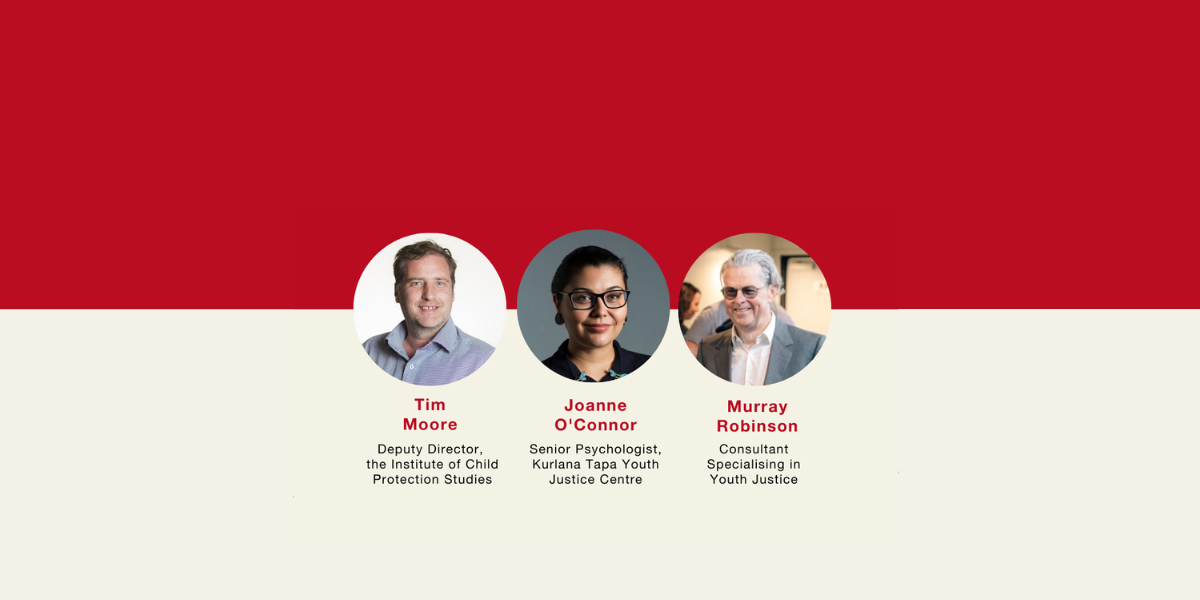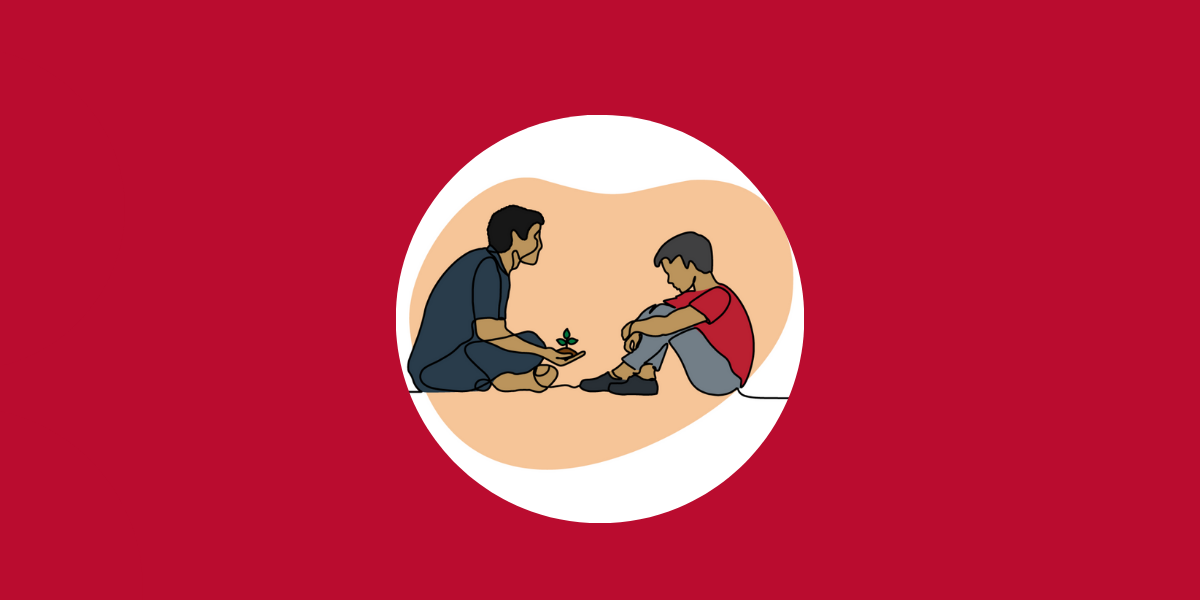Leaving Care: What we know and don’t know about outcomes for young people
Mar 2020
Written by Lynne McPherson
The research is clear: young people do not fare well when they leave care.
Study after study, both in Australia and internationally, tells us that our care leavers are more likely to be unemployed, homeless, experience poverty, mental health concerns, and as I argued in my previous blog, are at far greater risk of entering early adulthood with a criminal record compared to young people who have not experienced out of home care (OOHC).
They are also more likely to be socially isolated and lack informal social support from family and friends. There are particular groups of care leavers whose outcomes are at even higher risk such as Aboriginal and Torres Strait Islander young people, young parents, and young people with a disability. (Belenger & Van Holen, 2017; Bender, Yang, Ferguson & Thompson, 2015; Collins, 2016; McDowall, 2009; Montgomery, Donkoh & Underhill 2006).
All of this is not new news. Researchers have consistently found that outcomes for care leavers are a matter of real concern. What is less well known is the extent to which negative outcomes for young care leavers reflects their pre-care versus their in- care experience and under what circumstances do care leavers do well?
Pre-care and in-care realities for young people
The pre-care experience of young people:
Pre-care experiences, which most commonly have included trauma associated with violence and other forms of abuse, poverty, relational or housing instability, can all affect care leavers’ post-care outcomes (Liabo, McKenna, Ingold, & Roberts, 2016). Research is really helping us to understand the potentially lasting impact of early adversity on vulnerable young people who, in spite of being placed in OOHC may continue to struggle with forming relationships, learning and regulating their emotions and behaviour (Turney & Wildeman, 2013). Those who work in helping professions with these young people will know, simply placing them in a safe environment, in and of itself is not enough to overcome the devastating impact of early trauma and adversity.
The in-care experience of young people:
‘In care’ experiences affecting care leavers’ future outcomes have been found to relate to:
- the stability their placement/s had offered
- the quality and type of care they received
- the quality and longevity of the relationships they formed with carers or peers, and
- the quality of preparation for independence they were offered (Cashmore & Paxman 2007; Cashmore & Mendes, 2008; Mendes, Baidawi & Snow, 2014)
Researchers have also found the age that young people leave care is a determinant of their future wellbeing; being younger at the age of discharge is associated with worse outcomes (Dixon 2008; Ingold & Roberts, 2016). In Australia, the Homestretch Campaign, advocating for all states and territories to extend care to the age of 21 years, reflects this emerging knowledge. Research and contemporary developmental theory also suggests to us that the developing brain for young people, in particular where they have experienced complex developmental trauma, may not have the capacity to make the kind of adult judgements required to live independently until their early to mid-20’s (Cozolino, 2014). These findings and more are available in the Research Briefing: Good Practice in Supporting Young People Leaving Care.
Under what circumstances do care leavers do well?
Canadian researcher, Roberta Woodgate who, along with her colleagues in recent years has scoped the international research literature reporting on interventions for young people ageing out of care (Woodgate, Morakinyo & Martin, 2017). These authors identified 68 relevant articles for inclusion and analysis, each paper reporting on a leaving care intervention implemented and evaluated in the last 20 years, in a developed country. Leaving care interventions included ‘housing, employment, education, mentorship, independent living and health’ (Woodgate et al, 2017, p.280). Put simply, this scoping review suggests that it is not all ‘doom and gloom’ for care leavers here in Australia and across the world. Interventions that focused on one or more of the categories listed below were found most of the time and in most of the places to make a real difference.
An overview of the key findings in relation to each of these categories is summarised below:
- Housing Interventions: Young people who accessed housing interventions, in their transition from care such as post care support and transitional housing, did better than those who did not, not only in terms of housing stability but also in terms of employment, economic security with less school attrition and substance misuse. A key ingredient identified was that ‘young people felt that most of their independent living needs were fulfilled as a direct result of supportive housing’ (Sinkkonen & Kyttala, in Woodgate et al, 2017).
- Employment Interventions: Training and employment-oriented programs aimed to assist young people to transition out of care showed some positive results. One study reported that 60% of young people involved in an employment intervention found employment within three months of the training. Conversely, one study indicated that there was no evidence that these programs led to long term positive outcomes, concluding that there is a need to also focus on young people’s capacity to emotionally self-regulate, resolve conflict and self-advocate in order to gain and maintain employment (Edelstein & Lowenstein, in Woodgate et al, 2017).
- Education Interventions:Education interventions offered were often holistic and included social, personal and informational support for young people to access education and achieve their goals. In one example, the ‘Foster Care Alumni Creating Educational Success’ program found that the retention rate in education for care leavers was higher than for young people who had not been in care! (Watt, Norton, & Jones in Woodgate et al, 2017). In another study, positive results in terms of educational and employment outcomes were seen up to five years post education intervention support (Camacho & Hemmeter in Woodgate et al, 2017)
- Mentorship: These programs typically offered socio-emotional support to young people who were transitioning from care using the vehicle of a positive relationship. Young people with a mentor were typically able to practice building relationships and regulating their emotions. Mentor programs were found to produce positive outcomes for young people. A key finding in this category is that the ‘longer relationships between the youth and mentors produced more positive effects and had the potential to better meet the needs of youth transitioning to independent living’ (Woodgate et al 2017,p.295).
- Independent Living: These programs were designed to target those young people transitioning out of care into living independently with a focus on life skills, including job readiness, money management and enhanced social capacity by building social networks and providing emotional support and guidance. Evaluation outcomes were largely positive, although some had mixed findings and some reported no overall improvement. Overall, findings suggest that young people who participate in independent living programs are more likely to finish high school, to gain employment and to feel a sense of readiness to live independently (Woodgate et al, 2017).
- Health: Health-related interventions includes rehabilitation clinics focusing on substance misuse, as well as mental health assistance in the form of counselling support, group therapy, and campus-based mental health treatment. Whilst there were some findings indicating lower rates of substance use or offending behaviour following participation in therapy, a key finding was that mental health intervention was typically an under-resourced component of aftercare programs for young people transitioning from out of home care (Woodgate et al, 2017).
What does this mean for Intensive Therapeutic Care?
The Woodgate scoping review (2017) does not identify therapeutic care as a determinant of success for young people leaving care. This is most likely to be because, since therapeutic approaches to OOHC are a relatively recent development, that they may not yet be on the radar of international researchers looking for signs of success in leaving care. What we do know is that a critical component of the ITC system and one of the ten essential elements is transition planning, exit planning and post-exit support.
Looking again the 68 articles that Woodgate and colleagues identified, in the context of the ITC system, what we do see, without doubt, is the importance of:
- understanding and working with complexity, recognising that concrete or simplistic solutions to complex issues will not work
- assessing and supporting the impacts of trauma on the young person and creating relationships and environments that heal, thereby giving them critical capacities that they will need to maintain successful lives
- the centrality relationship, recognising that leaving care planning and the implementation of those plans will stand or fall on the basis of trusting, safe relationships with the young people involved
- holistic (anti-silo) approaches to planning which enable the multi-faceted approach required to meet each young person’s unique needs.
- Based on this knowledge, we might reasonably anticipate that the young person who has experienced authentic, trusting relationships in the ITC system, where the responsible adults were able to consistently co-regulate, identify and build on strengths and promote a relational climate of kindness and calm is more likely to be able to successfully make the leaving care transitions, navigating the adult world of education, work, and relationships.
Associate Professor Lynne McPherson
Director of Research, Centre for Excellence in Therapeutic Care
References
Bender, K., Yang, J., Ferguson, K., & Thompson, S. (2015). Experiences and needs of homeless youth with a history of foster care. Children and Youth Services Review, 55, 222–231. http://dx.doi.org/10.1016/j.childyouth.2015.06.007
Camacho, C. B., & Hemmeter, J. (2013). Linking youth transition support services: Results from two demonstration projects. Social Security Bulletin, 73, 59–71. Retrieved from https://www.ssa.gov/policy/docs/ssb/v73n1/v73n1p59.html
Cashmore, J. & Mendes, P. (2008). Australia. In Mike Stein and Emily R Munro (Eds.), Young Peoples Transitions from Care to Adulthood: International Research and Practice. London: Jessica Kingsley Publishers.
Cashmore, J., & Paxman, M. (2007). Longitudinal Study of Wards Leaving Care: Four to five years on. Sydney: Social Policy Research Centre.
Collins, J. L. (2016). Integrative review: Delivery of healthcare services to adolescents and young adults during and after foster care. Journal of Paediatric Nursing, 31, 653– 666. http://dx.doi.org/10.1016/j.pedn.2016.07.005
Dixon, J. (2008). Young people leaving care: health, well‐being and outcomes. Child & Family Social Work, 13, 2, 207–217.
Edelstein, S. & Lowenstein, C. (2014) Supporting Youth Transitioning out of Foster Care. Issue Brief 3: Employment Programs, OPRE Report # 2014-70. Washington, DC: Office of Planning, Research and Evaluation, Administration for Children and Families, US Department of Health and Human Services.
Gypen, L., Vanderfaeillie, J., De Maeyer, S., Belenger, L., & Van Holen, F. (2017). Outcomes of children who grew up in foster care: Systematic-review. Children and Youth Services Review, 76, 64–83. http://dx.doi.org/10.1016/j.childyouth.2017.02.035.
Liabo, K., McKenna, C., Ingold, A., & Roberts, H. (2016). Leaving foster or residential care: A participatory study of care leavers’ experiences of health and social care transitions. Child Care, Health and Development, 43, 2, 182–191. http://dx.doi.org/10.1111/cch.12426.
Montgomery, P. Donkah, C. and Underhill, K. (2006). Independent living programs for young people leaving the care system: The state of the evidence. Children and Youth Services Review, 28, 1435-144.
McDowall, (2009). CREATE Report Card 2009. Transitioning from Care- Tracking Progress. Downloaded at https://create.org.au/wp-content/uploads/2014/12/05.-CREATE-Report-Card_Transitioning-From-Care-Tracking-Progress_November-2009.pdf on 10/03/2020
Mendes, P., Snow, P. & Baidawi, S. (2014). Good Practice in Reducing the Over-Representation of Care Leavers in the Youth Justice System. Melbourne: Monash University.
Sinkkonen, H., & Kyttälä, M. (2015). Supportive Housing in Foster Care: The Views of Young People. Child Care in Practice, 21(4), 408–424. https://doi.org/10.1080/13575279.2015.1037251
Turney, K. & Wildeman, C. (2013). Adverse childhood experiences among children placed in and adopted from foster care: Evidence from a nationally representative survey, Child Abuse and Neglect, 64, 117-129
Watt, T. T., Norton, C. L., & Jones, C. (2013). Designing a campus support program for foster care alumni: Preliminary evidence for a strengths framework. Children and Youth Services Review, 35, 1408–1417. http://dx.doi.org/10.1016/j.childyouth.2013
Woodgate, R., Morakinyo, O. & Martin, K. (2017). Interventions for youth ageing out of care. Children and Youth Services Review, 82(c), 280-300.




















